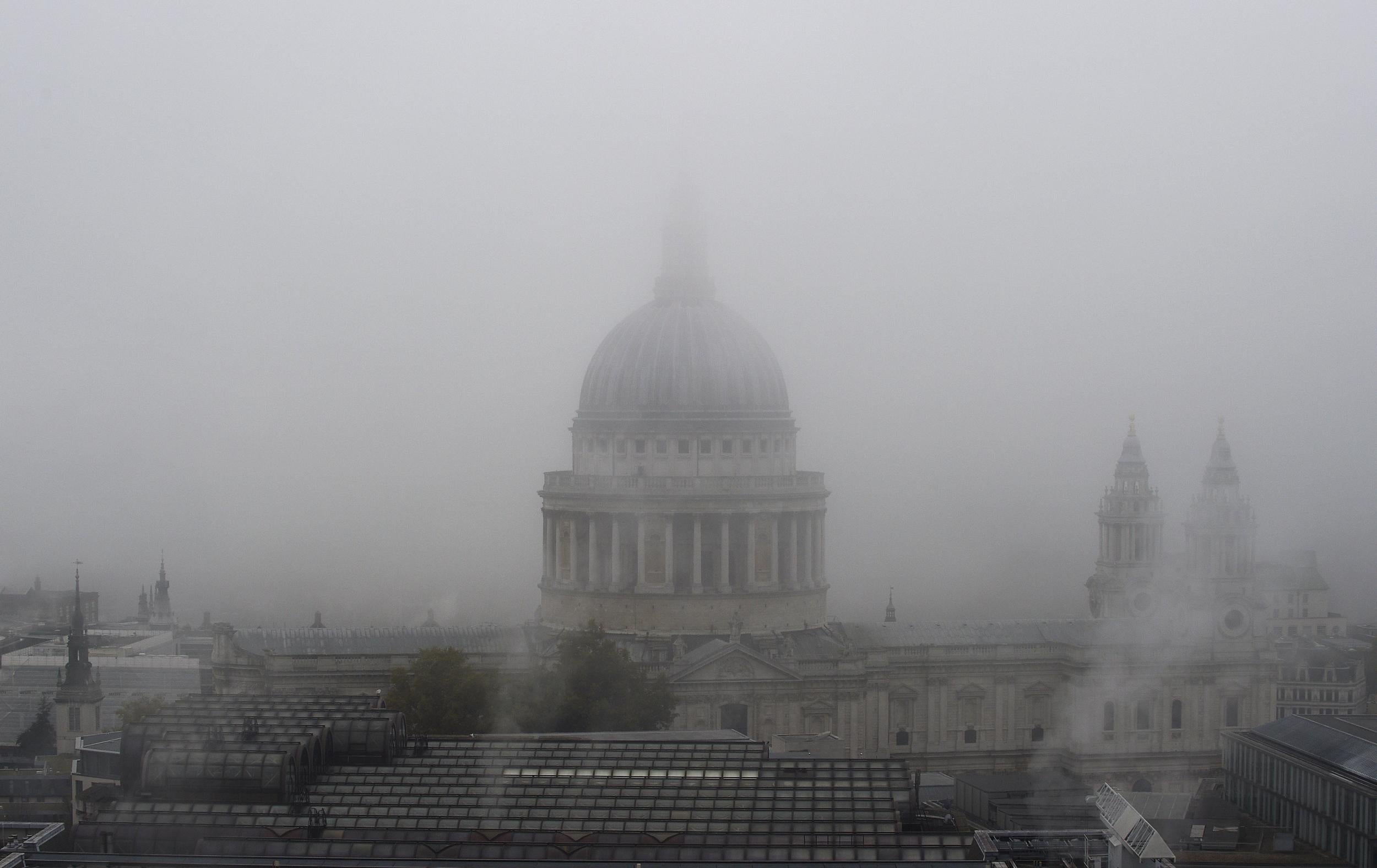UK weather: What is fog and why is the UK so foggy right now?
Everything you ever wanted to know about fog (but were too afraid to ask)

Despite 1 November breaking the British record for the hottest November day ever, much of the country has recently been shrouded in fog.
Reduced visibility over London resulted in more than 100 flights out of Heathrow and London City airports getting cancelled, with one video recorded by a plane passenger showing only the tip of the Shard poking out from underneath the clouds.
As the fog continues to linger and Britons resign themselves to a lifetime of low visitiblity and dampness, now is a good time to learn a little bit more about this white, wispy menace.
What is fog?
Fog is basically a kind of low-lying cloud that originates from a local body of water, such as a sea, lake or marsh - different to regular clouds, which contain water droplets from a number of different sources.
When water vapour in the air condenses into tiny droplets of liquid water, they stay suspended in the air and fog is formed.
Why is it so foggy today?
The fog currently hanging over the UK is known as radiation fog - when the ground cools overnight, the air above it does too. This means the air is capable of holding less water vapour, so it condenses into liquid water, and the whole country wakes up to fog.
Recent rainy weather and warm temperatures mean there's lots of moisture around, both in the air and the ground, and so there's more vapour in the air that can be condensed into fog.
That's why the recent fog is so thick, and is causing more problems than a spell of fog usually would.
What is the difference between fog and mist?
Yes, there's actually a technical difference between the two - when visibility is under 1 kilometre (0.62 miles), it's fog.
If there's still a bit of fog in the air but you can see further than 1 kilometre, it's mist.
You can thank us later when that question comes up in your next pub quiz.
How do I drive in fog?
Fog may make everything look a little prettier and more autumnal, but it can be a hazard if you're driving or cycling.
According to the Highway Code, you have to use headlights when visibility is 'seriously reduced' - generally defined as less than 100 metres (about the length of a football pitch).
The AA's guidance for driving in fog is common sense - take your time, keep a generous distance between yourself and the car in front, and keep your front and rear fog lights on.
You should be aware of how to operate your fog lights, and take care not to rely too much on automatic lighting - if you have this feature in your car, your lights might not come on during the day, putting you and other drivers at risk.
If you get to a junction and you can't see properly due to fog, stop and roll your windows down to listen to traffic, to see when is a good time to emerge.
The same applies to cyclists, although it's obviously difficult for bike-riders to get the same kind of powerful, piercing lights that cars have.
Good lights are essential all year round, so now would be a good time to make an investment.
Taking a more confident position in the middle of the road will also help drivers see you better through the haze. As usual, staying as visible as possible and taking it easy should help keep you safe.
Subscribe to Independent Premium to bookmark this article
Want to bookmark your favourite articles and stories to read or reference later? Start your Independent Premium subscription today.

Join our commenting forum
Join thought-provoking conversations, follow other Independent readers and see their replies